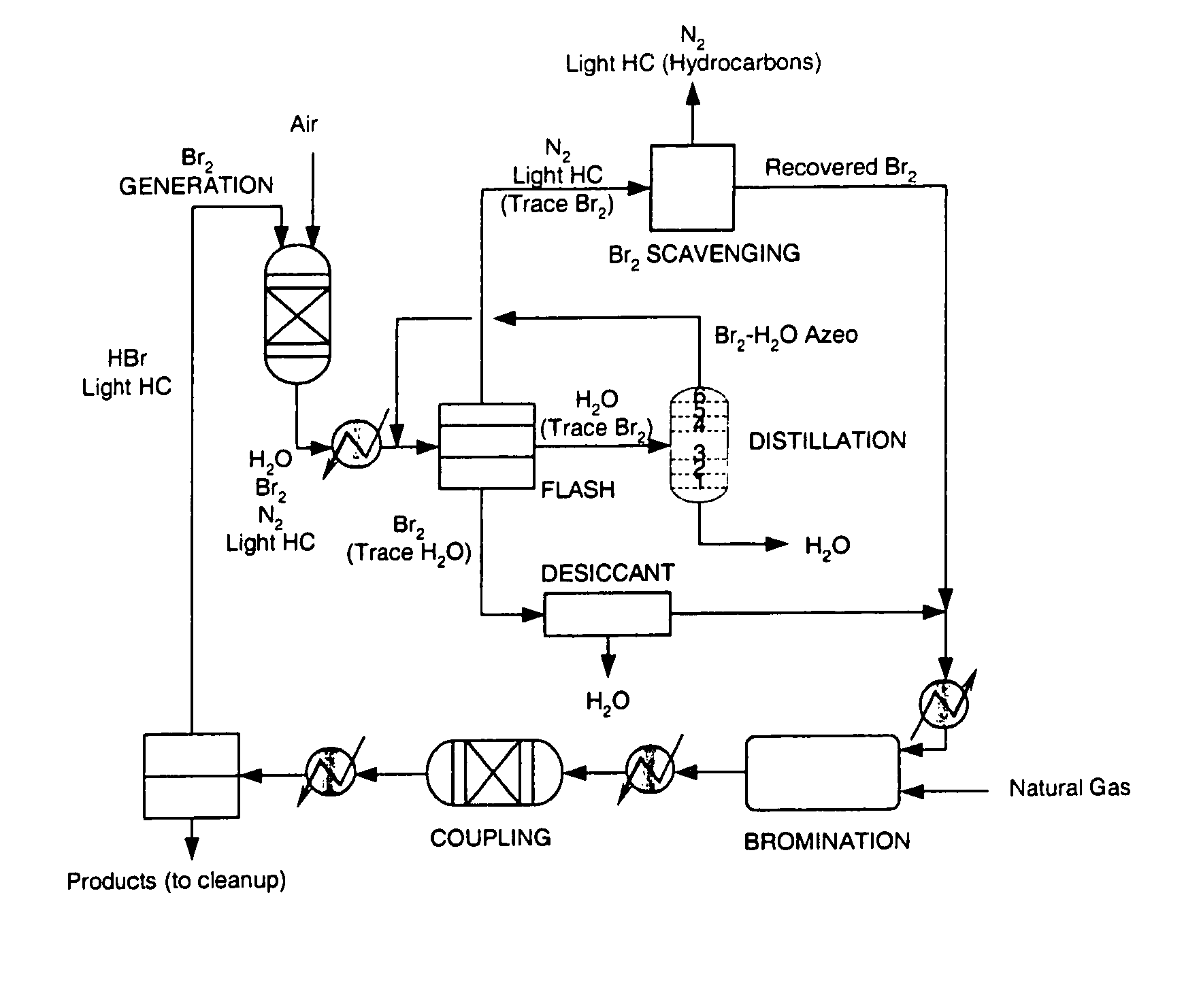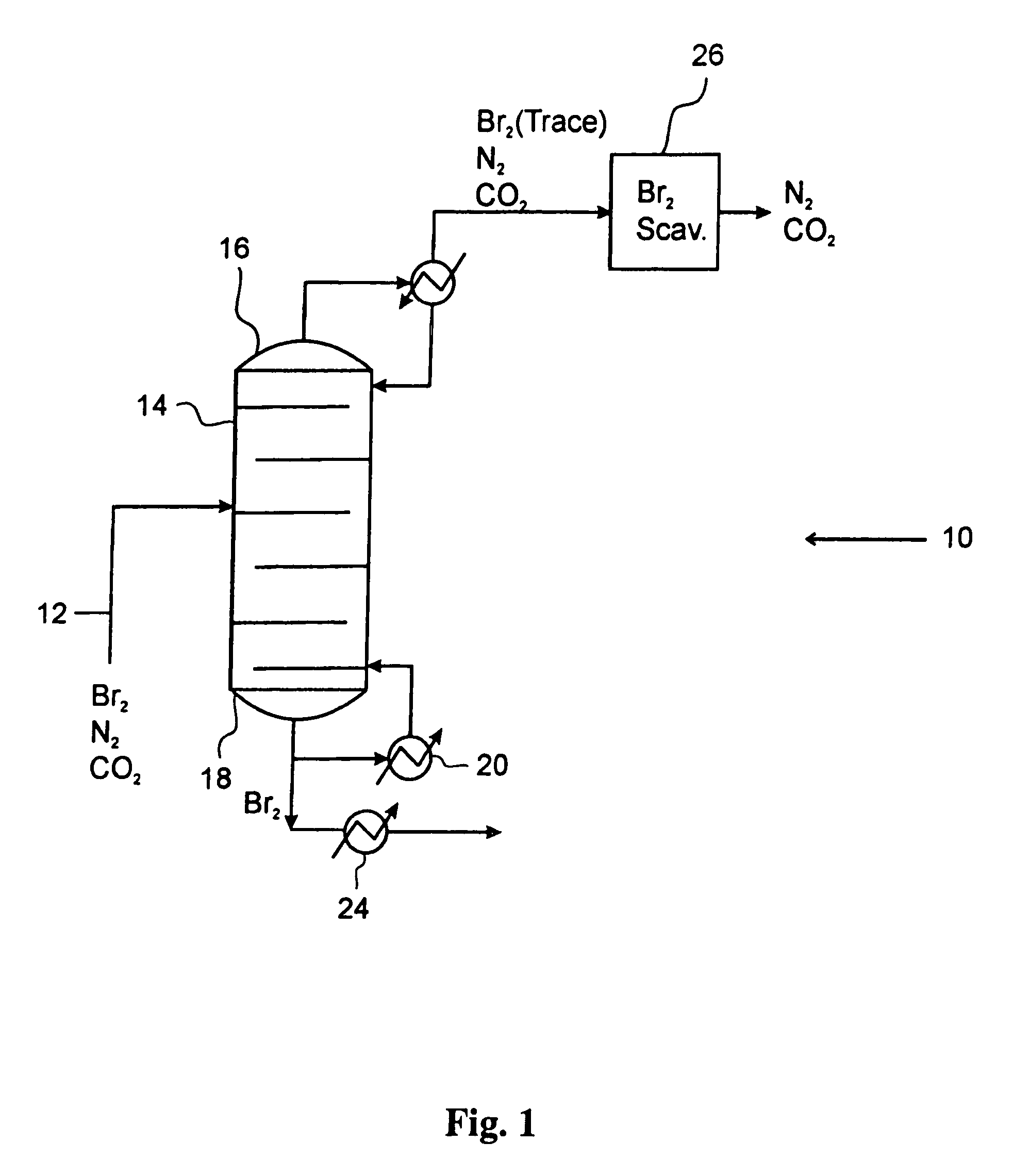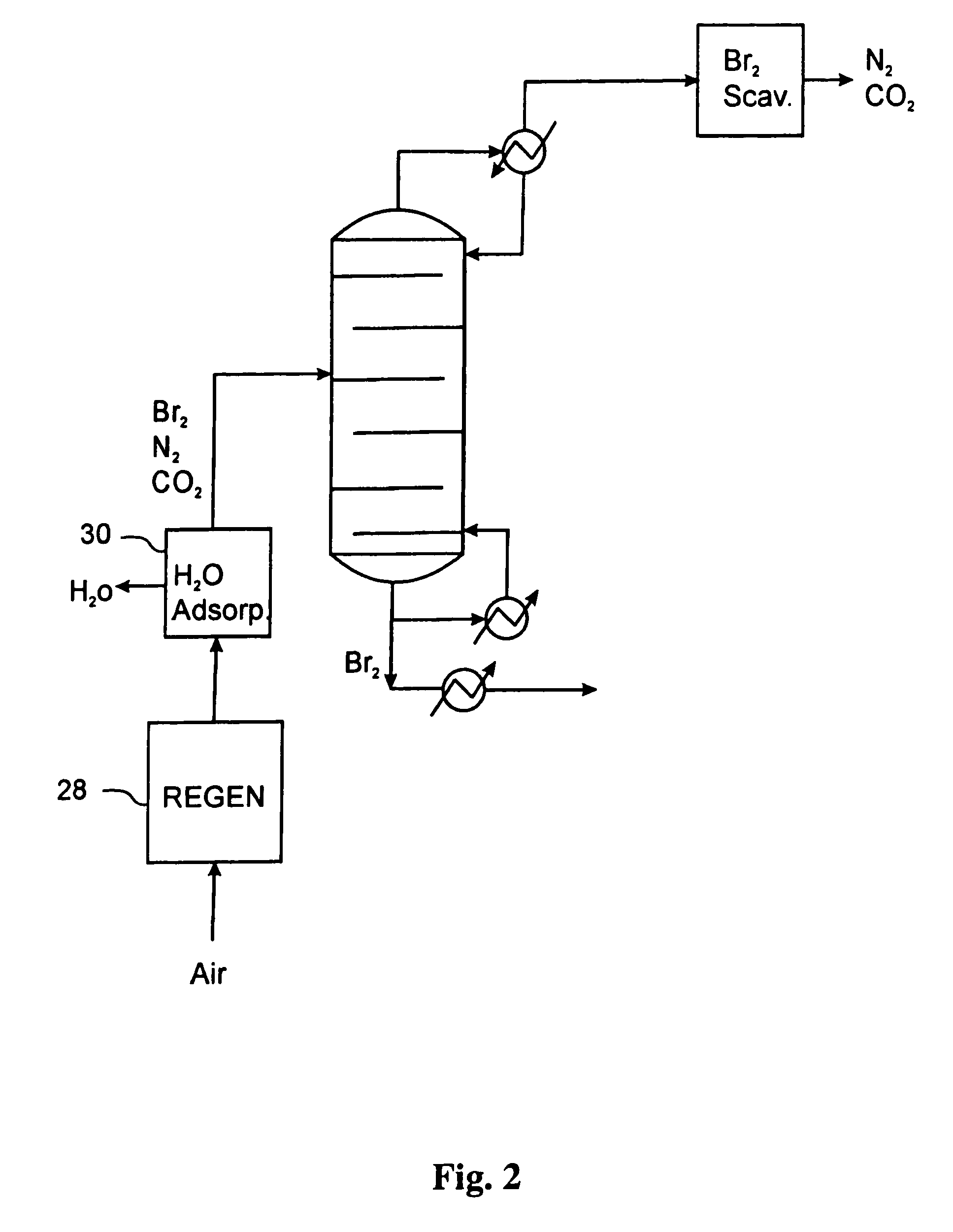Separation of light gases from halogens
a technology of light gas and halogen, which is applied in the direction of vacuum distillation separation, liquid degasification, separation process, etc., can solve the problems of high cost of oxygen, high cost of oxygen separation, and high cost of nitrogen separation
- Summary
- Abstract
- Description
- Claims
- Application Information
AI Technical Summary
Benefits of technology
Problems solved by technology
Method used
Image
Examples
example
[0044]An inert gas stream of nitrogen at a flow rate of 40 sccm (standard cubic cm per minute) containing approximately 25% bromine by volume was treated according to the method described in the current embodiment. The stream was cooled to a temperature of 25° C., which industrially can be accomplished by using an air-cooled heat exchanger. The stream, which is at a pressure of 25 bar, is then flashed in a single vapor liquid flash unit operating at a temperature of 5° C. The liquid outlet from the flash contains more than 98% of the bromine in the original feed along with some inert gas that is dissolved in the bromine stream. The vapor stream containing the inert gas and trace bromine was then passed over a bed of supported copper (I) bromide at room temperature. The bromine capture from the inert gas stream was complete, and the scrubbing bed performed complete bromine capture for a period of 40 min. The exhausted scrubbing bed containing copper (II) bromide and copper (I) bromid...
PUM
| Property | Measurement | Unit |
|---|---|---|
| boiling points | aaaaa | aaaaa |
| boiling points | aaaaa | aaaaa |
| boiling point | aaaaa | aaaaa |
Abstract
Description
Claims
Application Information
 Login to View More
Login to View More - R&D
- Intellectual Property
- Life Sciences
- Materials
- Tech Scout
- Unparalleled Data Quality
- Higher Quality Content
- 60% Fewer Hallucinations
Browse by: Latest US Patents, China's latest patents, Technical Efficacy Thesaurus, Application Domain, Technology Topic, Popular Technical Reports.
© 2025 PatSnap. All rights reserved.Legal|Privacy policy|Modern Slavery Act Transparency Statement|Sitemap|About US| Contact US: help@patsnap.com



